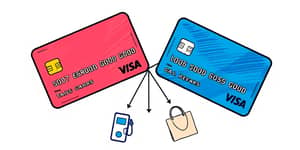
In an era where every click and tap can expose sensitive data, online shoppers yearn for a solution that blends convenience with peace of mind. Cyber threats evolve daily, and traditional payment methods often fall short in protecting our financial identities. There’s a compelling answer emerging across banks, credit card issuers, and fintech platforms: virtual card numbers. By generating temporary, transaction-specific numbers, consumers can experience a new level of safety and confidence when shopping online.
As e-commerce surges, so do the opportunities for fraudsters. Data breaches at major retailers, phishing schemes, and card-not-present attacks have become alarmingly common. In 2024, reports indicated that nearly one in three consumers encountered fraudulent charges, leading to hours of dispute resolution and emotional stress. The underlying problem? Our real card numbers, once compromised, can be used repeatedly across multiple sites and services.
To reclaim control over our financial security, we must rethink how we share payment details. Virtual card numbers offer a paradigm shift: instead of exposing your permanent card information, you transact with a unique, randomly generated number that stands between you and potential thieves. This simple yet profound change dramatically reduces your risk of falling victim to online scams.
Virtual card numbers function like digital clones of your credit or debit card. When you request one—usually via your bank’s app, a browser extension, or an online portal—a new card number is created on the spot. It’s linked to your real account but conceals your actual details. Merchants see only the temporary number, never your true card data.
Depending on your provider, virtual cards can be tailored for different scenarios: one-time purchases, recurring subscriptions, or even locked to a single merchant. Once the purpose is fulfilled, the number expires or is deactivated automatically, making stolen information worthless. The rapid adoption of these tools shows how consumers and businesses alike value the instant issuance and deactivation these services provide.
Virtual cards come with multiple layers of defense, ensuring that your online spending remains under your command. These capabilities go far beyond what traditional plastic cards can offer:
Because virtual cards shield your real account, even if a merchant’s database is breached, compromised numbers are often already invalid or locked. This drastically reduces the fallout from major cyberattacks, letting you shop confidently across thousands of online stores.
While safety is paramount, virtual card numbers also unlock impressive conveniences for both individuals and organizations. With real-time insights and easy controls, managing expenses has never been smoother:
For busy households and small businesses juggling dozens of recurring charges, this level of control can streamline budgeting and reconciliation. No more scouring statements—every purchase is tagged, limited, and logged in real time.
Adopting virtual cards is straightforward if your issuer supports them. Begin by logging into your banking or credit card app:
1. Locate the virtual card feature in your dashboard or extension.
2. Specify your preferences: single-use, merchant-specific, or recurring.
3. Set spending limits and expiration dates to match your needs.
4. Copy the generated number and enter it at checkout in place of your physical card.
Within seconds, your transaction is processed under the protective umbrella of your virtual card settings. Should you suspect any unusual activity, you can instantly pause or delete the number without affecting your primary account.
Enterprises are increasingly leveraging virtual cards to tighten procurement controls and simplify accounting. Companies issue cards to employees with preset budgets, reducing invoice errors and eliminating cumbersome reimbursement processes. In ecommerce, merchants appreciate that virtual payments often mean fewer chargebacks and cleaner auditing trails.
In industries like insurance and healthcare, where sensitive customer data is paramount, virtual cards facilitate secure disbursements for claims and payouts. The result is a smoother user experience and a stronger defense against internal and external fraud schemes.
Recent statistics underscore the tangible impact of virtual cards on fraud reduction and consumer trust. In 2022, only 9% of virtual cards faced unauthorized charges, compared to 36% for physical corporate cards. This gap drives rapid adoption across sectors.
As financial institutions innovate, we expect more flexible issuance models, AI-driven fraud detection tied to virtual numbers, and broader acceptance at point-of-sale terminals. The future of secure payments is dynamic, personalized, and firmly in your control.
Virtual card numbers represent a transformative leap in online payment security. By decoupling your real account from each purchase, you gain unparalleled protection, control, and peace of mind. Whether you’re an individual safeguarding personal finances or a business streamlining expenses, virtual cards empower you to shop, pay, and transact with complete confidence. Embrace this technology today and leave the threats of yesterday’s fraud behind.
References













